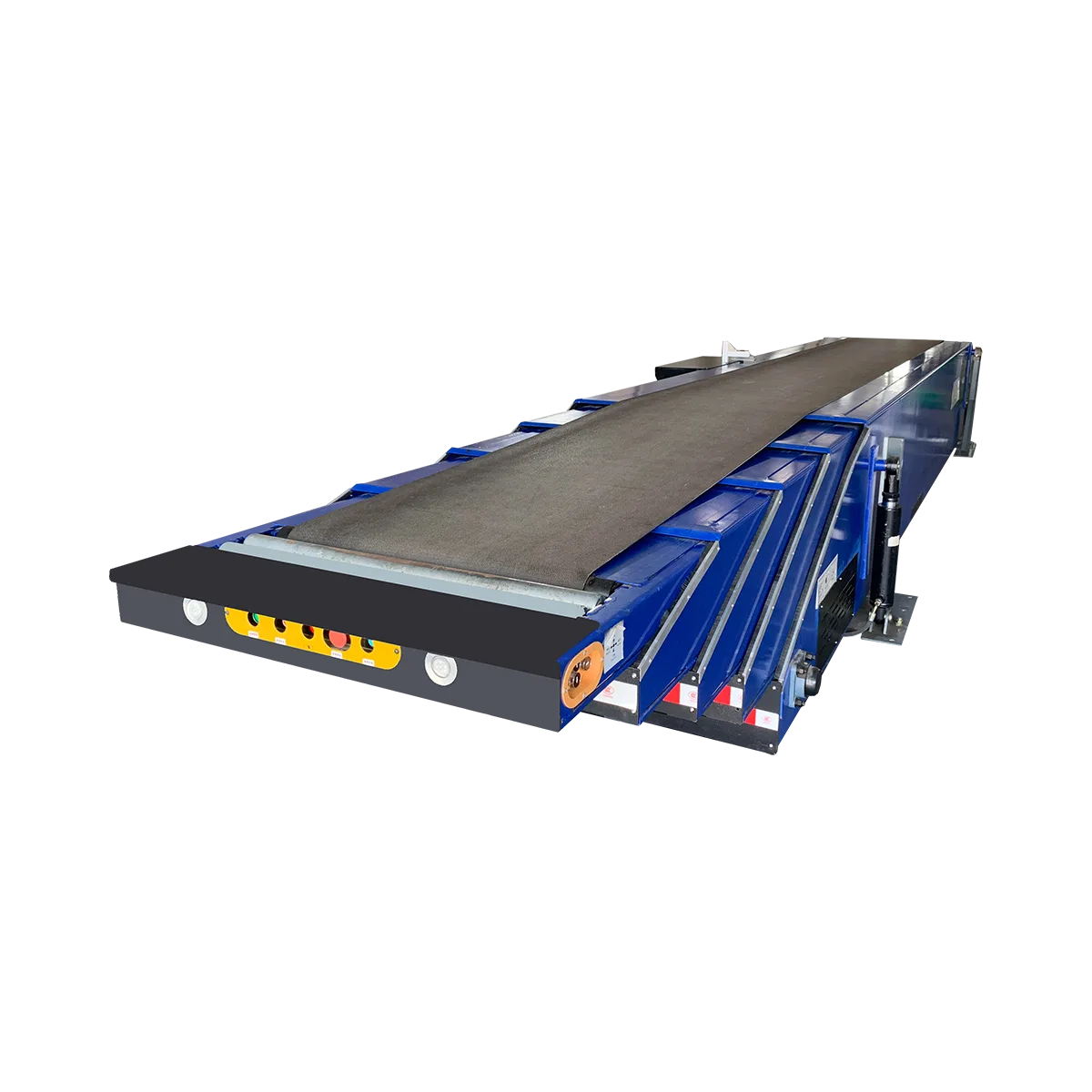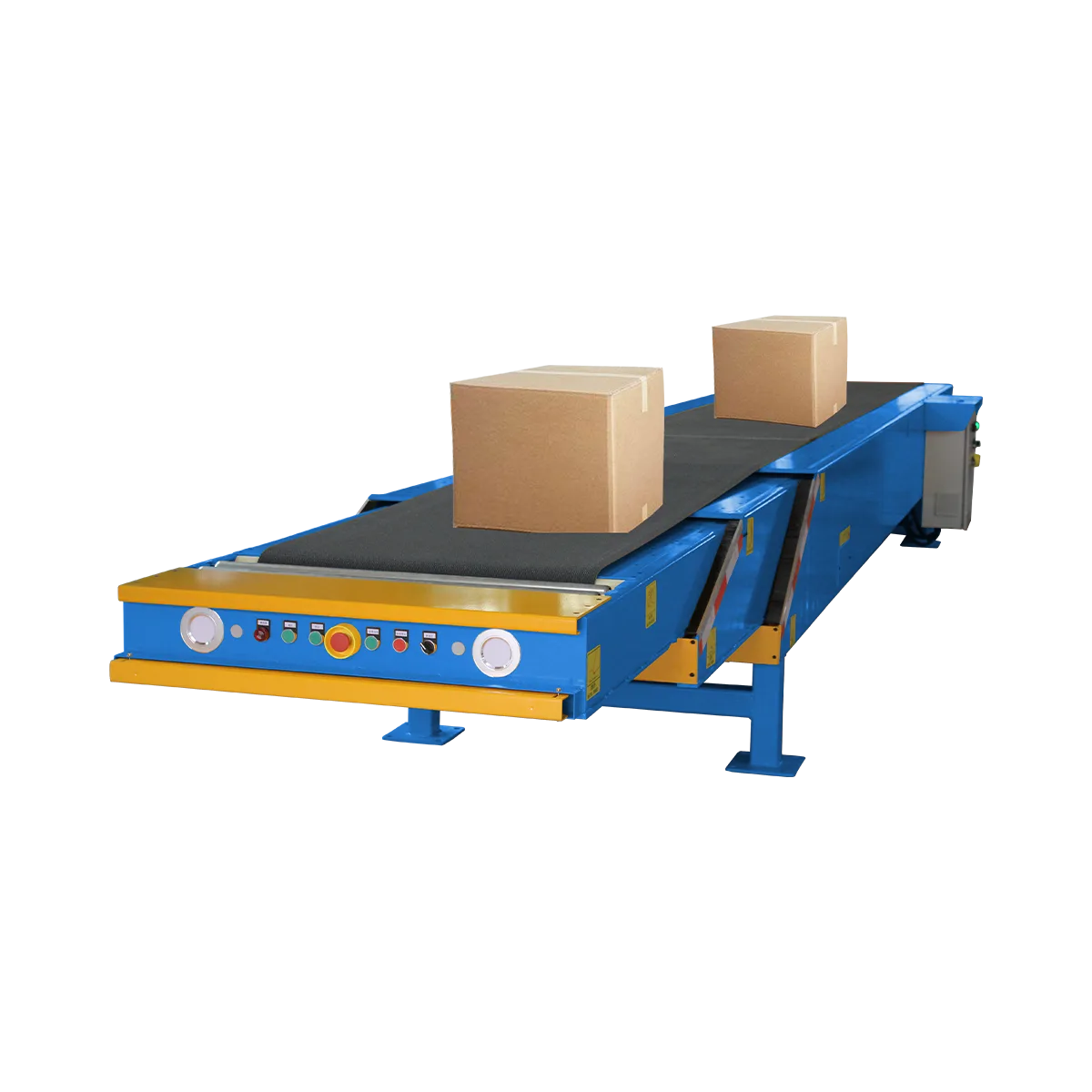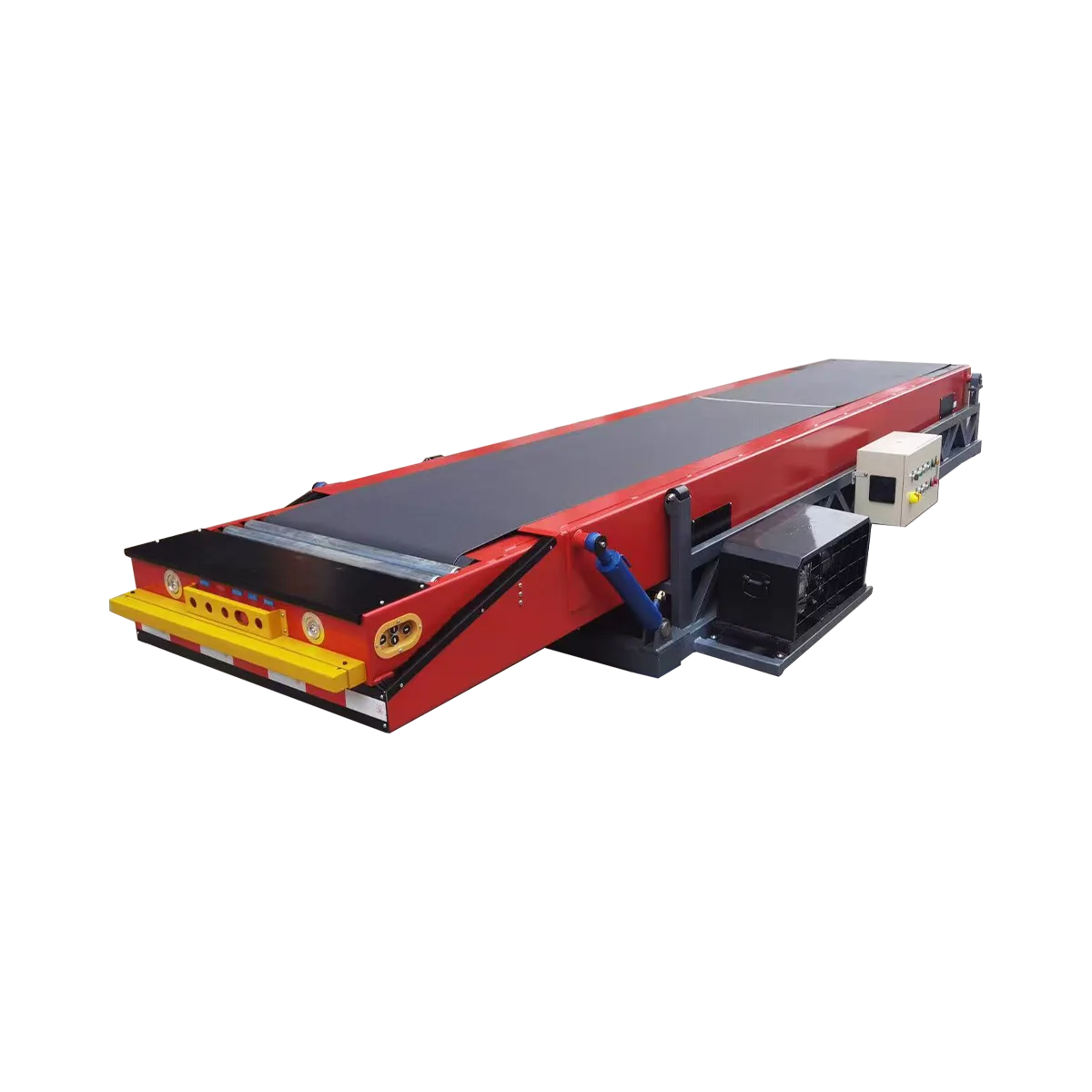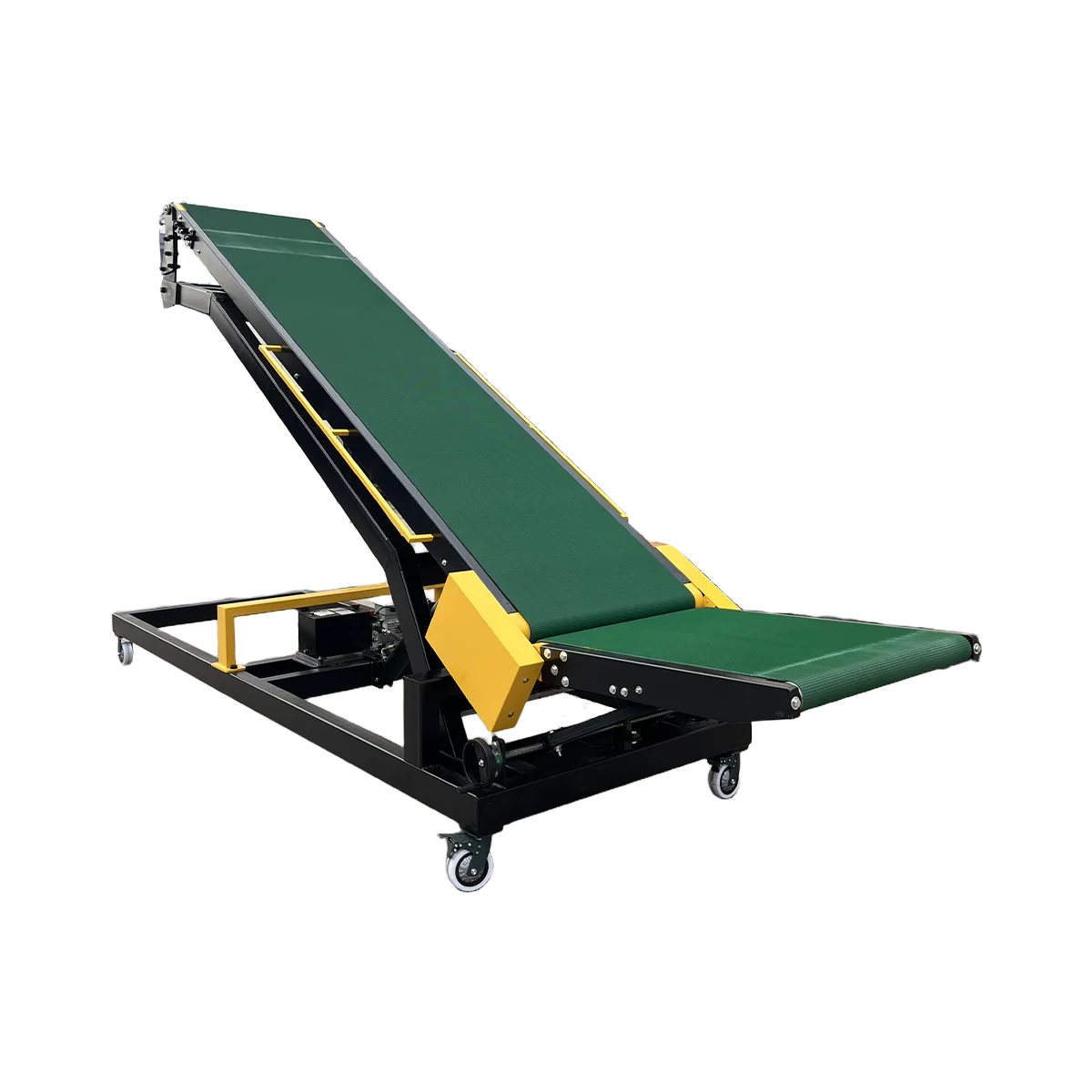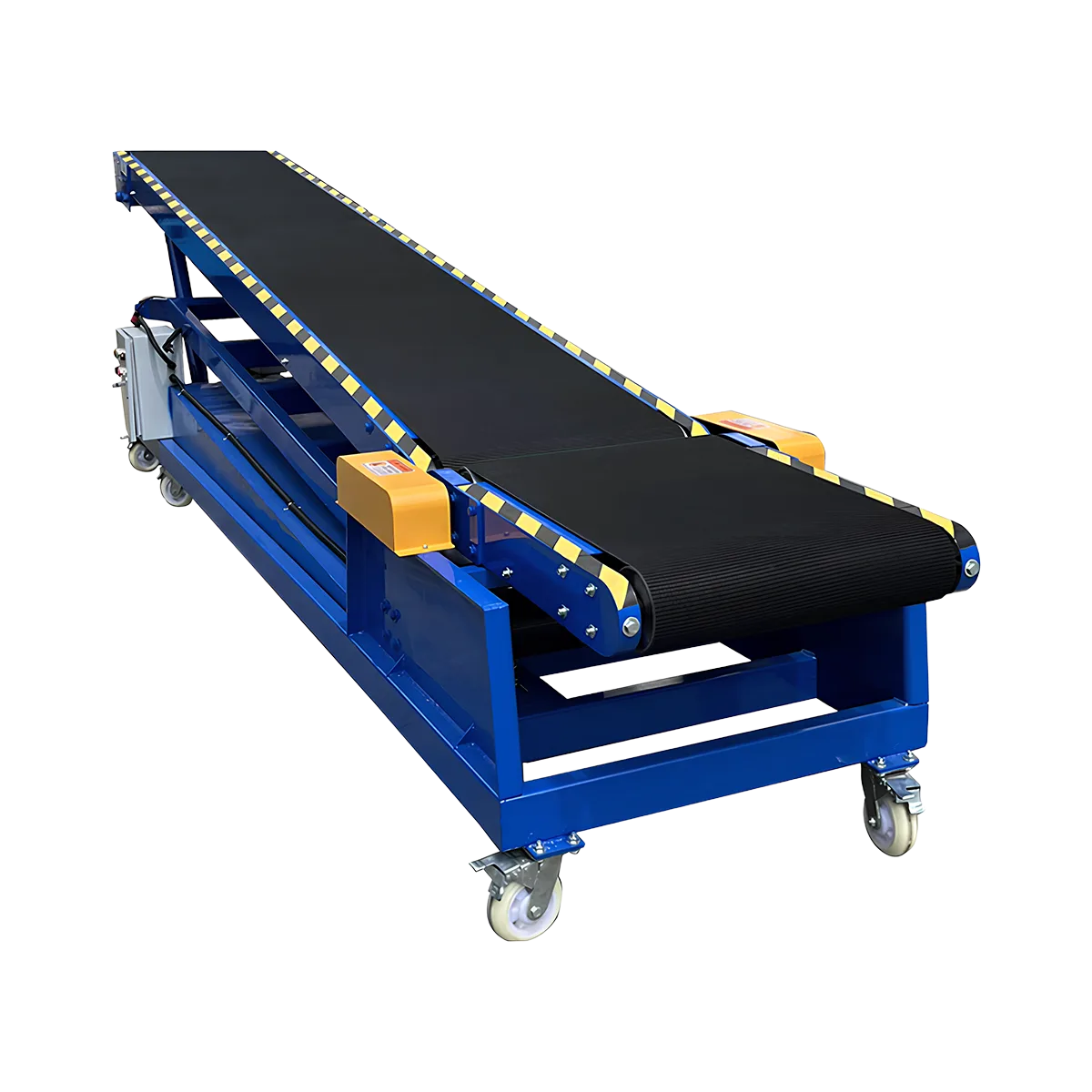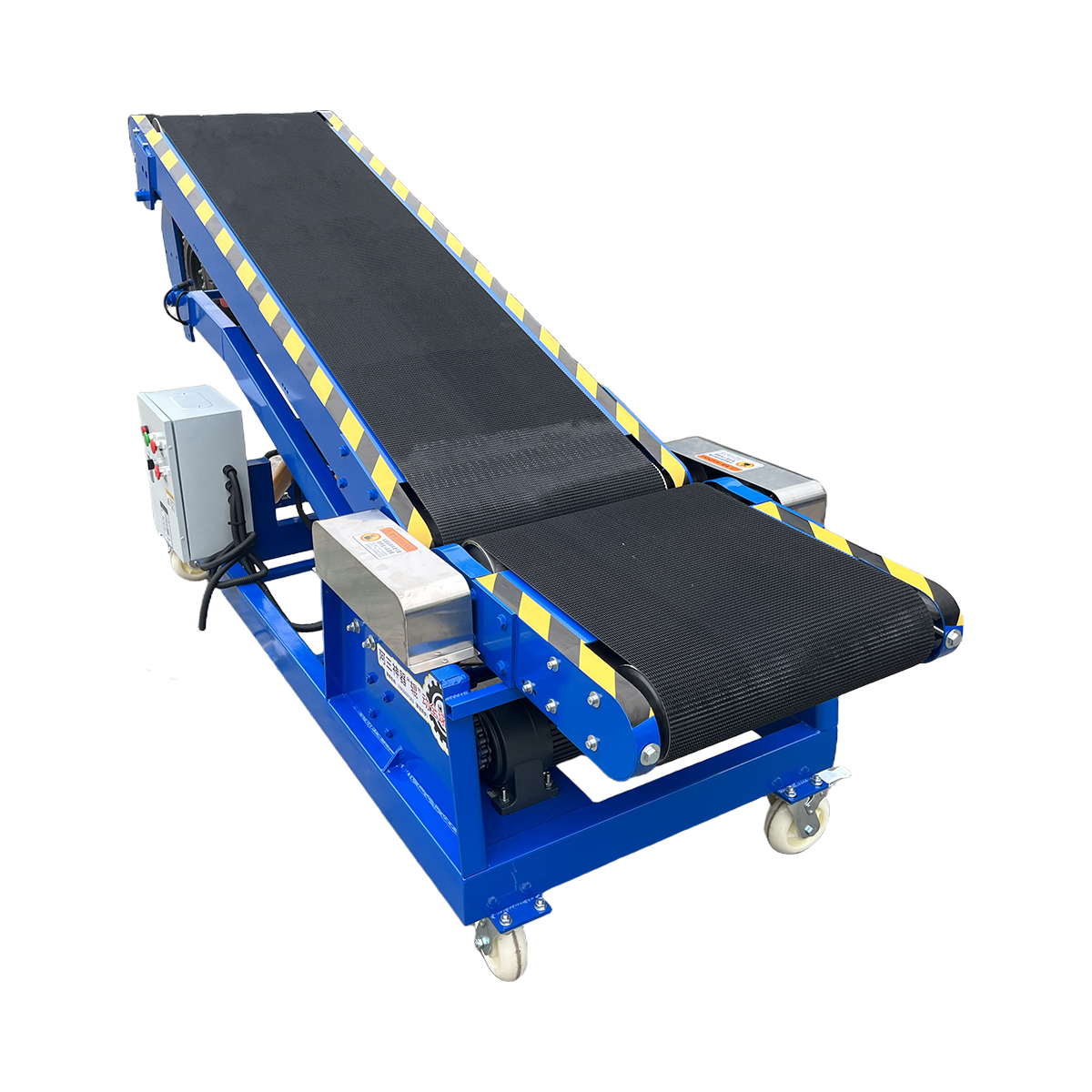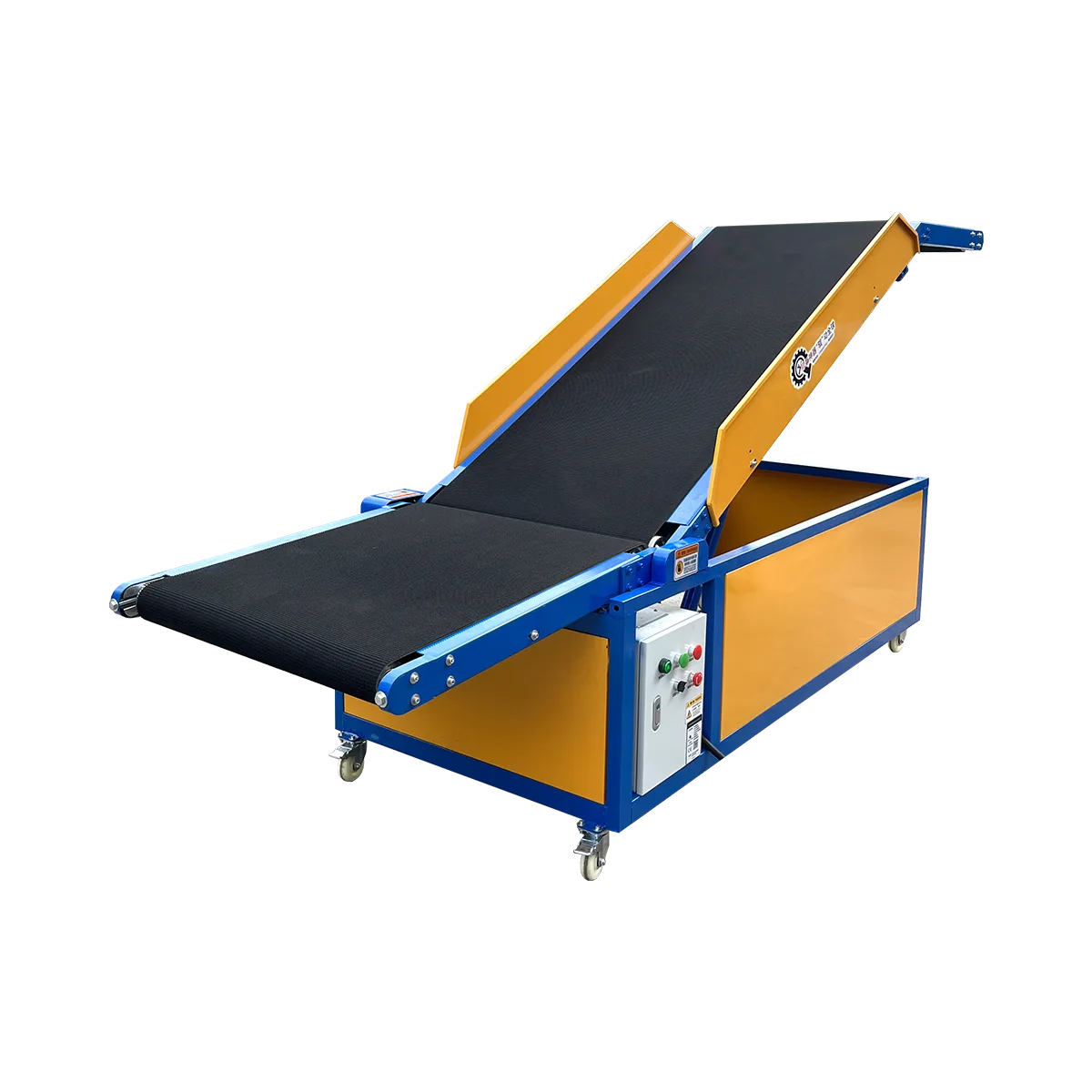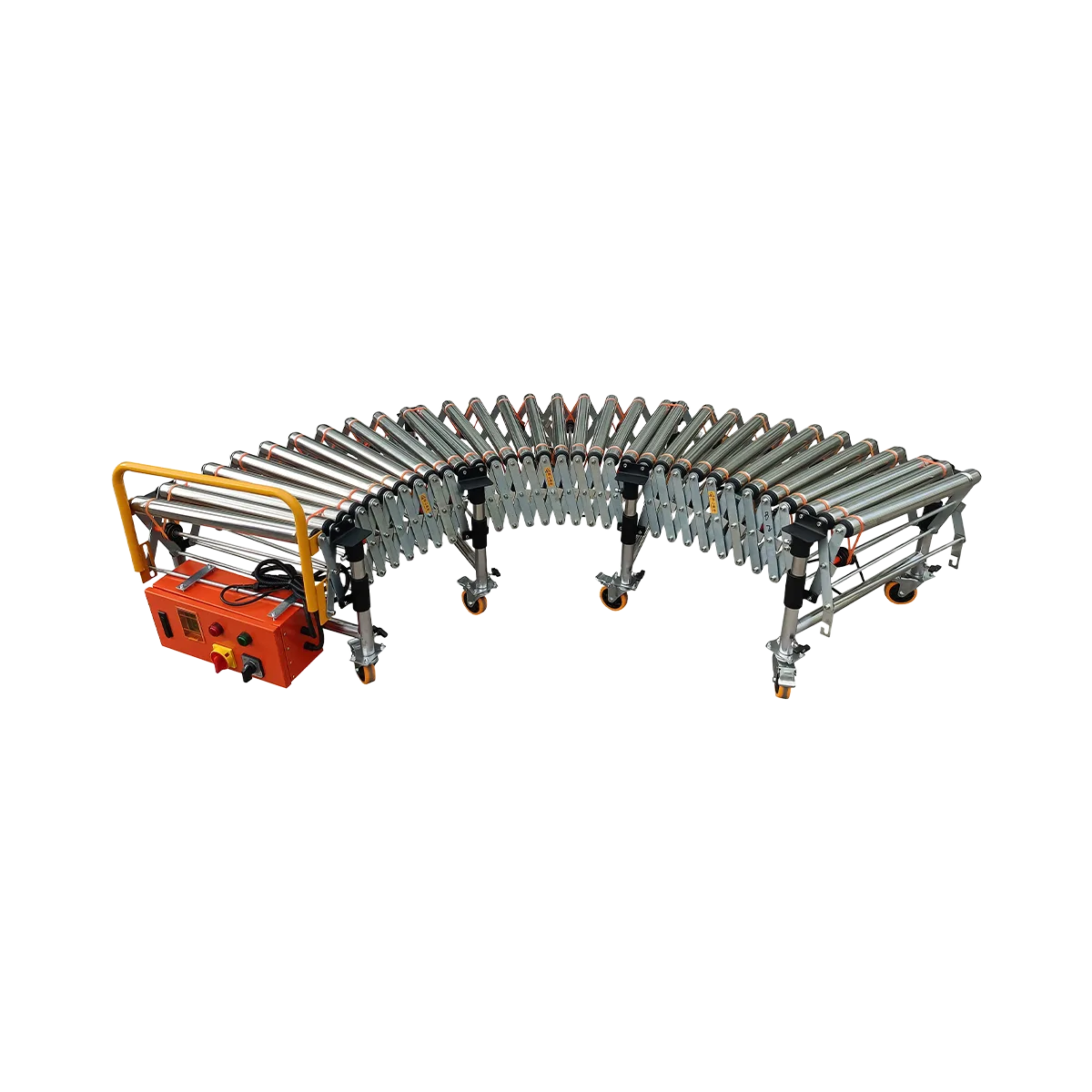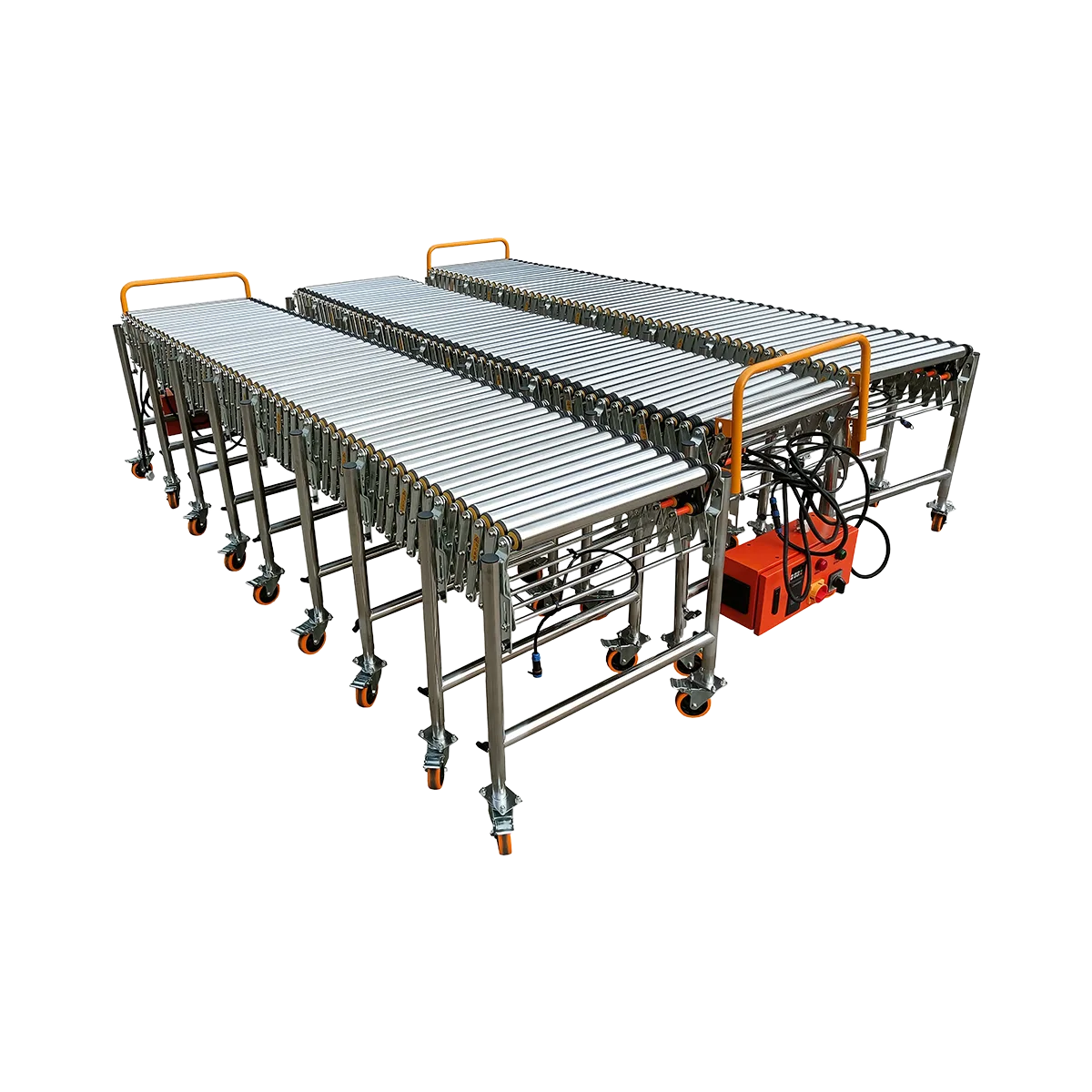Top 3 Conveyor Systems for Faster Truck and Container Loading
Discover the three best truck loading conveyor systems to eliminate warehouse bottlenecks. Compare telescopic, hydraulic, and powered roller options for faster container loading operations.
Related Products
- TeleScopic Conveyor – 5 SectionsCollapsed LengthExtended LengthLoad Capacity
60 kg/m
Applicable GoodsFlat-bottomed Goods
Bagged Goods
- TeleScopic Conveyor – 4 SectionsCollapsed LengthExtended LengthLoad Capacity
60 kg/m
Applicable GoodsFlat-bottomed Goods
Bagged Goods
- TeleScopic Conveyor – 3 SectionsCollapsed LengthExtended LengthLoad Capacity
60 kg/m
Applicable GoodsFlat-bottomed Goods
Bagged Goods
- TeleScopic Conveyor – 2 SectionsCollapsed LengthExtended LengthLoad Capacity
60 kg/m
Applicable GoodsFlat-bottomed Goods
Bagged Goods
- Hydraulic Conveyor – Large – 7900 mm LengthCollapsed LengthExtended LengthLoad Capacity
80 kg/m
Applicable GoodsFlat-bottomed Goods
Bagged Goods
- Hydraulic Conveyor – Medium – 7000 mm LengthCollapsed LengthExtended LengthLoad Capacity
80 kg/m
Applicable GoodsFlat-bottomed Goods
Bagged Goods
- Hydraulic Conveyor – Small – 5400 mm LengthCollapsed LengthExtended LengthLoad Capacity
80 kg/m
Applicable GoodsFlat-bottomed Goods
Bagged Goods
- Hydraulic Conveyor – Micro – 3700 mm LengthCollapsed LengthExtended LengthLoad Capacity
50 kg/m
Applicable GoodsFlat-bottomed Goods
Bagged Goods
- Powered Roller Conveyor – O-shaped Belt Driven – 1500 mm/SectionCollapsed Length
525 mm
Extended Length1500 mm
Load Capacity80 kg/m
Applicable GoodsFlat-bottomed Goods
- Powered Roller Conveyor – Multi-wedge Belt Driven – 2000 mm/SectionCollapsed Length
700 mm
Extended Length2000 mm
Load Capacity100 kg/m
Applicable GoodsFlat-bottomed Goods
Every minute a truck sits idle at your loading dock represents lost revenue and rising operational costs. Inefficient truck loading conveyor systems create bottlenecks that ripple throughout your entire supply chain, affecting everything from labor allocation to delivery schedules. In today’s competitive logistics environment, optimizing the loading and unloading process isn’t just about speed—it’s about creating sustainable efficiency that drives profitability.
Modern logistics conveyor systems have evolved to address these challenges, offering specialized solutions for different operational needs. Whether you’re managing high-volume distribution centers, dealing with facilities without traditional loading docks, or seeking flexible solutions for varied workflows, selecting the right conveyor technology can dramatically transform your loading operations.
In this comprehensive guide, we’ll examine the three most effective conveyor systems that are revolutionizing truck and container loading workflows, helping you identify which solution aligns best with your operational requirements and business objectives.
Option 1: The High-Throughput Champion – Telescopic Conveyor
When maximum throughput is your primary concern and you operate dedicated loading docks, the telescopic conveyor stands as the undisputed efficiency champion.
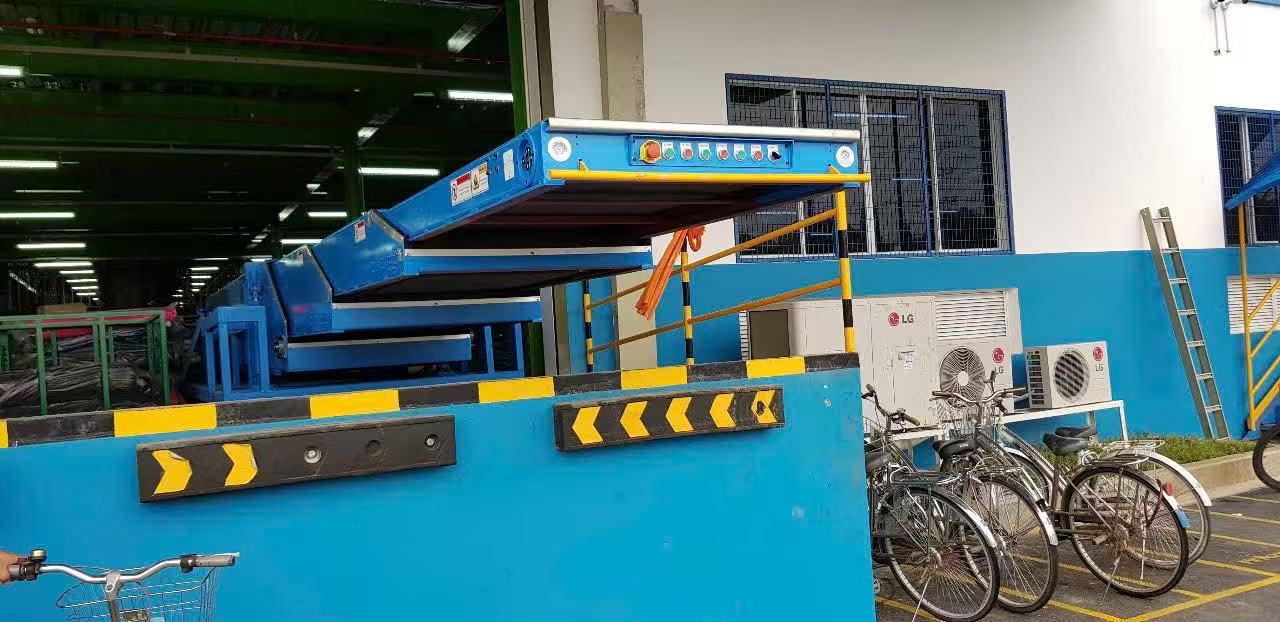

Best for: High-volume, dedicated loading docks
Telescopic conveyors excel in environments where:
- High package volumes (3,500+ pieces per hour) demand rapid processing
- Fixed loading docks serve as permanent transfer points
- Consistent truck types and container dimensions are processed
- Labor optimization is a critical business objective
- Long-term infrastructure investment makes economic sense
- Quick truck turnaround times directly impact bottom-line results
These powerful systems create a continuous, automated bridge between your warehouse floor and deep inside the truck or container, eliminating inefficient manual handling and dramatically increasing throughput rates.
How it works: Extends directly into the trailer
The telescopic conveyor’s defining feature is its extendable boom design that can reach deep into trailers and containers. Here’s how this sophisticated system operates:
- The main body remains fixed at your loading dock
- Multiple nested boom sections extend and retract via powered mechanisms
- The conveyor belt runs continuously through all sections
- Packages move seamlessly from your facility directly into the trailer
- Operators can control extension length and conveyor speed through a central control panel
- Hydraulic height adjustment allows perfect alignment with different truck heights
Naili’s telescopic conveyor lineup includes models with 2, 3, 4, and 5 extending sections, offering maximum extensions from 5 meters up to an impressive 17 meters. This range ensures complete coverage of even the deepest shipping containers or trailers.
Key specifications of Naili’s telescopic conveyor systems include:
- Conveying speeds of 10-40 m/min (frequency adjustable)
- Load capacity of up to 80 kg/m²
- Belt width options to accommodate various package sizes
- Integrated lighting for improved visibility inside trailers
- Heavy-duty construction with high-quality steel framing
- Optional features including hydraulic lift, operator platforms, and electric casters
The most significant advantage of telescopic conveyors is their ability to dramatically reduce loading and unloading times. A typical operation can achieve up to 40-50% time savings compared to manual loading methods or less automated alternatives.
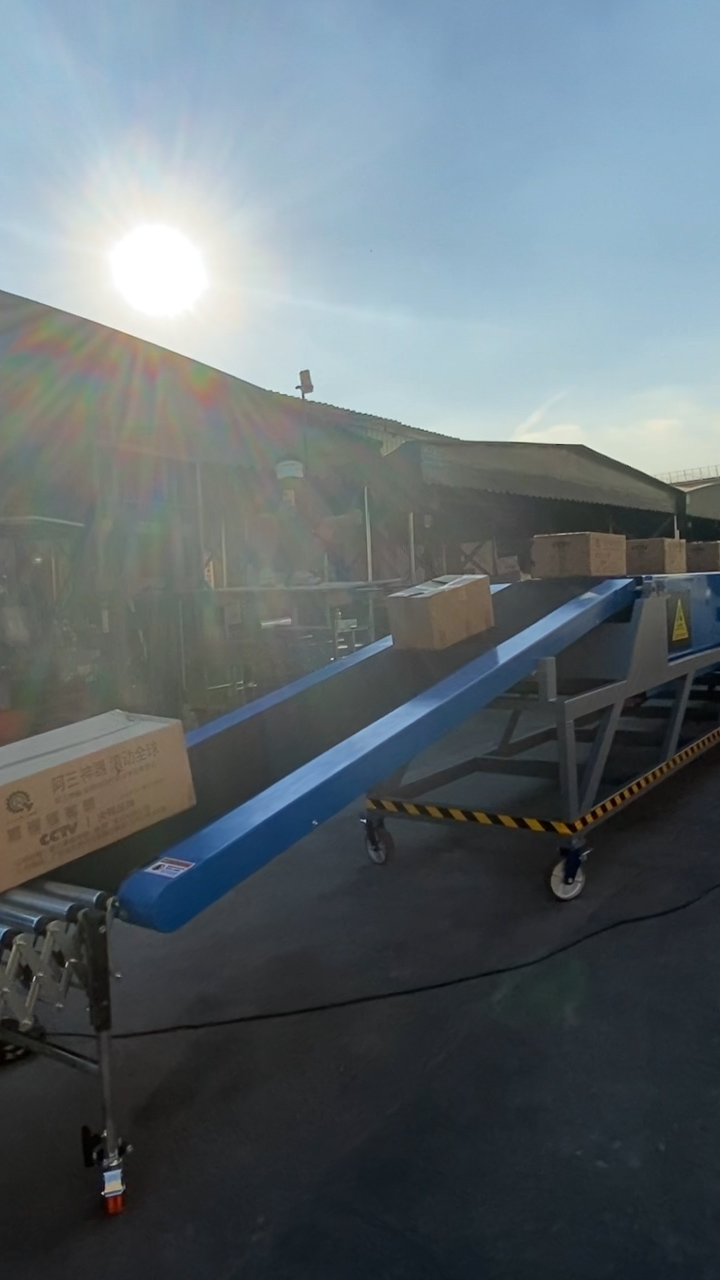

Option 2: The Versatile All-Rounder – Hydraulic Conveyor + Roller Conveyor Combo
For operations without dedicated loading docks or those dealing with varying truck heights, the hydraulic conveyor paired with roller conveyor extensions offers unmatched versatility.
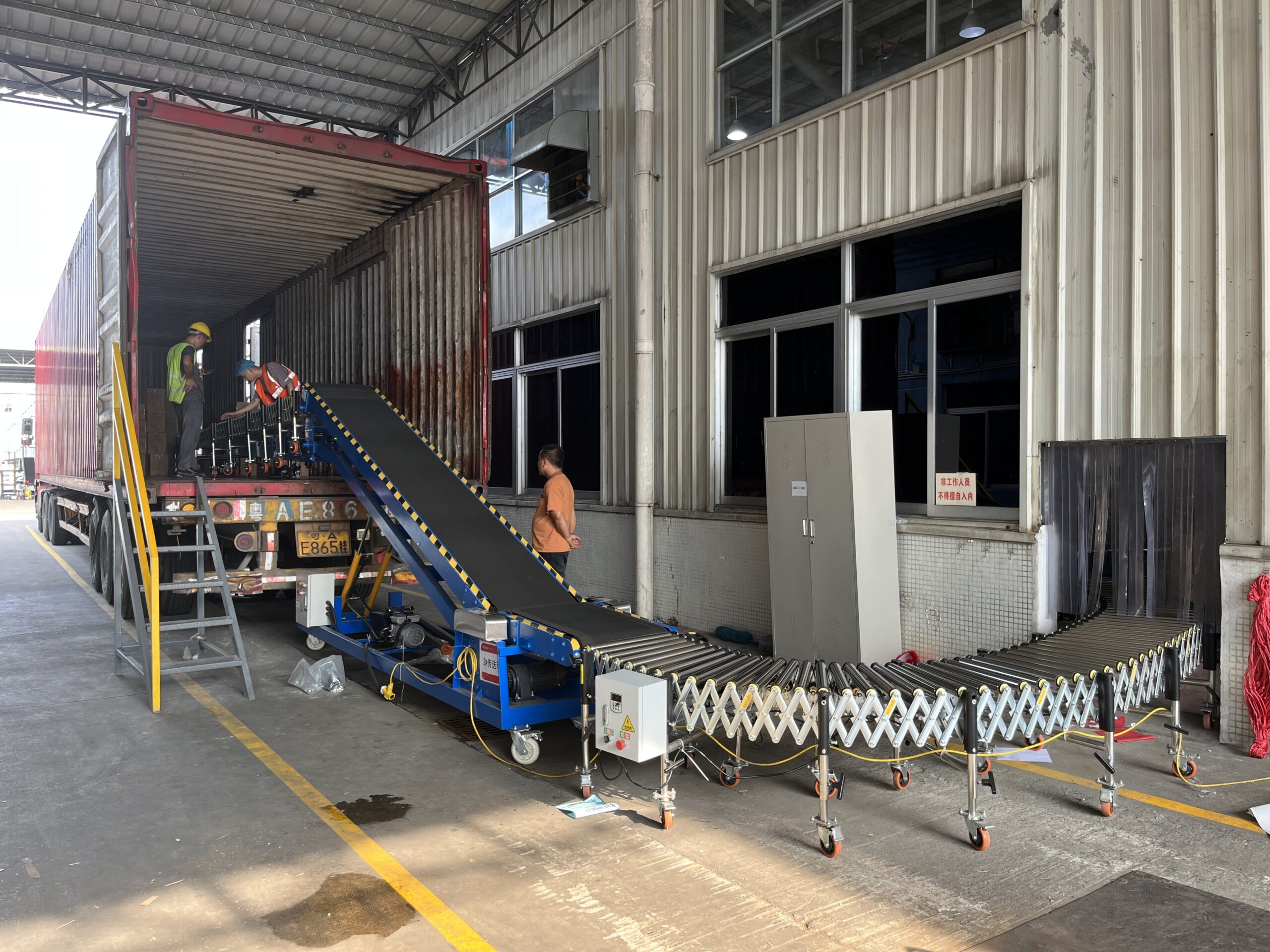

Best for: Warehouses with no dock or varying truck heights
This combination system is ideally suited for:
- Facilities without permanent loading dock infrastructure
- Operations handling multiple truck types with different bed heights
- Businesses requiring portable loading solutions that can be repositioned
- Warehouses with space constraints that prevent permanent dock construction
- Companies seeking cost-effective alternatives to expensive dock construction
- Operations needing to load/unload at multiple locations throughout a facility
The hydraulic conveyor + roller conveyor combination creates a complete loading solution that bridges the critical height gap between ground level and truck bed while extending reach into the vehicle.
How it works: Hydraulic unit lifts goods to a flexible roller conveyor that goes into the truck
This modular system creates a continuous path from ground level to deep inside the truck or container:
- The hydraulic base unit creates an inclined bridge between ground level and truck height:
- Hydraulic cylinders adjust the angle to match any truck height (700mm to 2400mm)
- A powered conveyor belt moves goods up the incline
- The upper platform connects seamlessly with roller conveyors
- Controls allow adjustment of height, speed, and direction
- Roller conveyors extend from the hydraulic unit into the truck:
- Multiple roller conveyor sections can be connected for required reach
- Both gravity and powered roller options are available depending on needs
- The modular design allows configurations specific to each loading scenario
- Lightweight construction permits easy adjustment by operators
Naili’s hydraulic conveyors come in four models (Micro, Small, Medium, and Large), with the Small, Medium, and Large versions specifically designed to support roller conveyor extensions:
- Small model (4000mm): Supports up to 6 meters of roller conveyor extensions
- Medium model (7000mm): Supports up to 10 meters of roller conveyor extensions
- Large model (7900mm): Supports up to 12 meters of roller conveyor extensions
This system’s true strength lies in its adaptability. The hydraulic component eliminates the need for a fixed loading dock by creating an adjustable bridge, while the modular roller extensions allow operators to configure the exact length needed for each specific vehicle.


Option 3: The Flexible & Budget-Friendly – Extendable Powered Roller Conveyor
When you already have a loading dock but need a flexible solution for extending your conveyor line into trucks and containers, extendable powered roller conveyors offer an excellent balance of functionality and value.
Best for: Businesses with a loading dock but needing a flexible connection into the truck
Powered roller conveyor systems are particularly well-suited for:
- Operations with existing loading docks needing extended reach
- Businesses dealing with varying load configurations and depths
- Warehouses requiring conveyor solutions that can be easily reconfigured
- Companies seeking lower initial investment options
- Facilities where space optimization is critical (units can collapse when not in use)
- Operations handling moderate package volumes (2,000-3,000 pieces per hour)
These versatile systems provide motorized transport of goods while offering the flexibility to extend into trailers, compact for storage, or reconfigure for different operational needs.
How it works: A flexible conveyor is extended from the dock into the truck
Extendable powered roller conveyors operate on a simple but effective principle:
- Telescoping frame sections extend to reach required depths
- Powered rollers provide consistent movement without manual effort
- Height-adjustable legs match various dock and truck configurations
- Integrated motors and controls manage directional flow and speed
- Compact storage is possible when systems are retracted
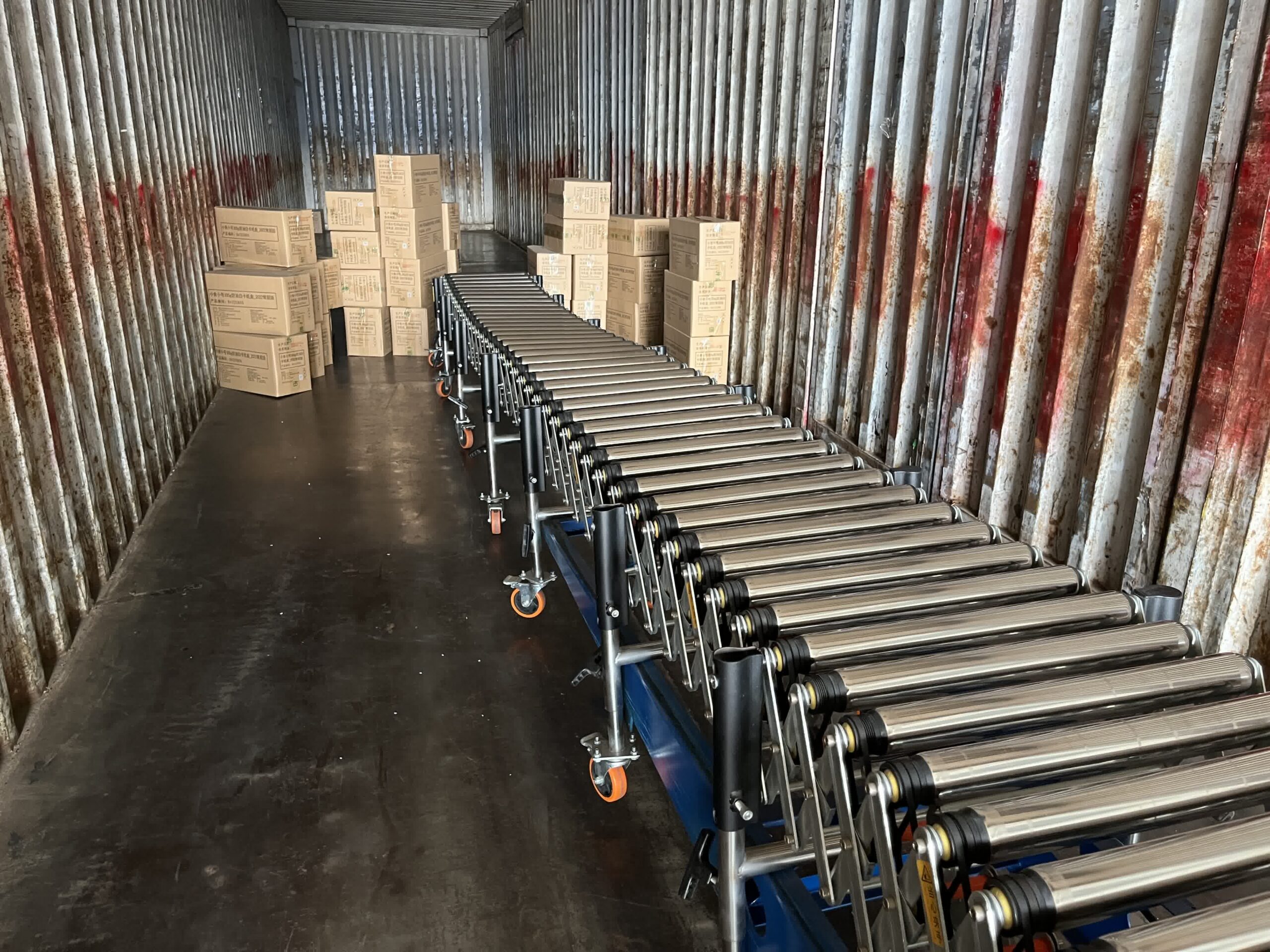

Naili offers three key variants of extendable powered roller conveyors:
- O-Belt Drive (1500mm sections):
- Extends from 525mm to 1500mm per section
- 80 kg/m load capacity
- Simple maintenance and lower initial cost
- Ideal for lighter packages and moderate use scenarios
- Multi-Wedge Belt Drive (2000mm sections):
- Extends from 700mm to 2000mm per section
- Enhanced 100 kg/m load capacity
- Greater durability and reduced maintenance frequency
- Perfect for heavier items and intensive use
- Multi-Wedge Belt Drive (3000mm sections):
- Extends from 1050mm to 3000mm per section
- 80 kg/m load capacity
- Maximum extension per section
- Optimized for longer reach with fewer connection points
All models feature bidirectional operation, speed control (0.3-40 m/min), and can be connected in series to create custom-length systems tailored to specific operational requirements.
The primary advantage of these systems is their versatility and scalability. As business needs evolve, additional sections can be added or reconfigured, protecting your investment while adapting to changing requirements.
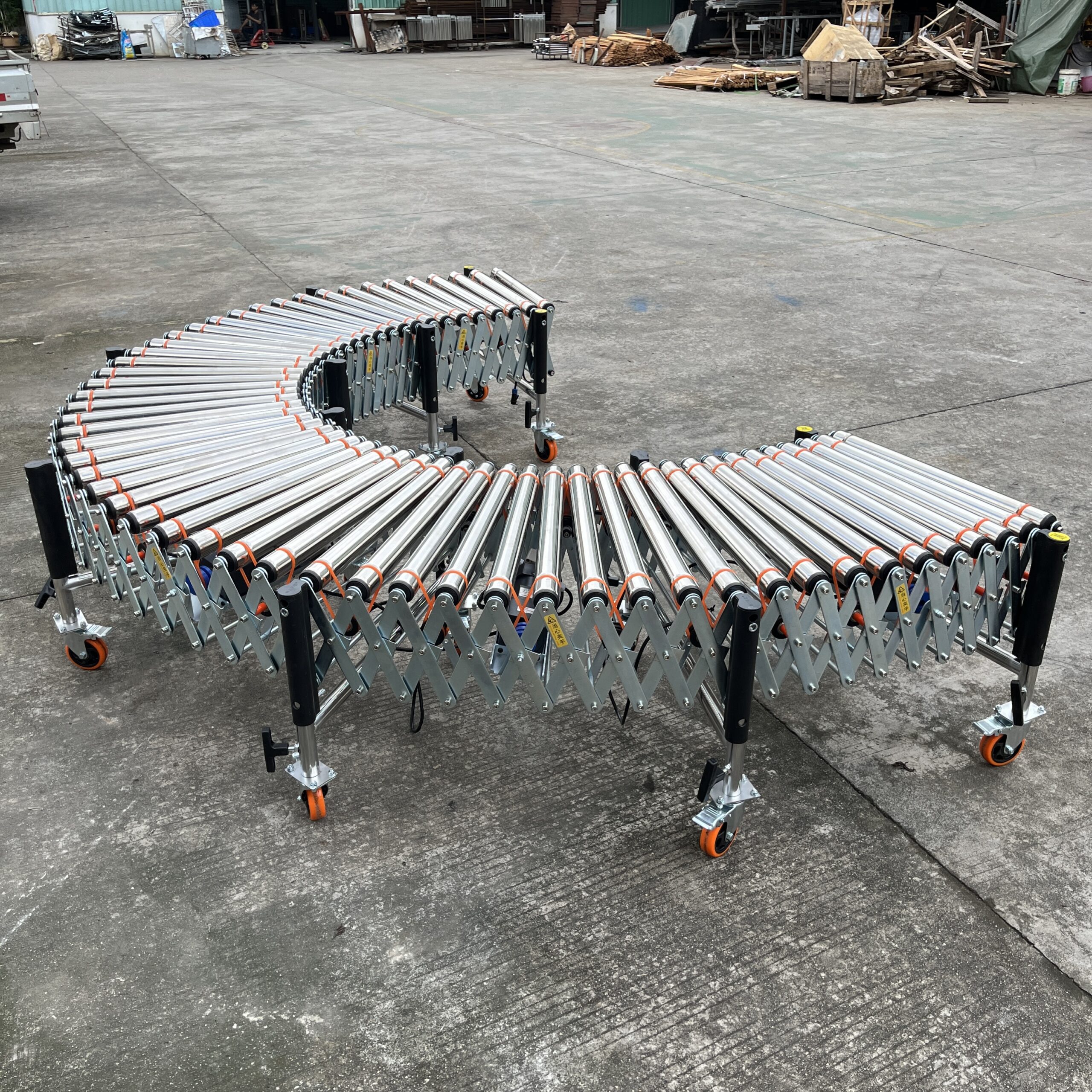

Comparison Chart: Which System is Right for Your Operation?
Selecting the optimal loading conveyor system requires careful consideration of your specific operational needs, infrastructure, and budget. This comparison chart highlights the key differences between our three featured systems:
| Feature | Telescopic Conveyor | Hydraulic + Roller Conveyor | Powered Roller Conveyor |
| Image |  
|  
| 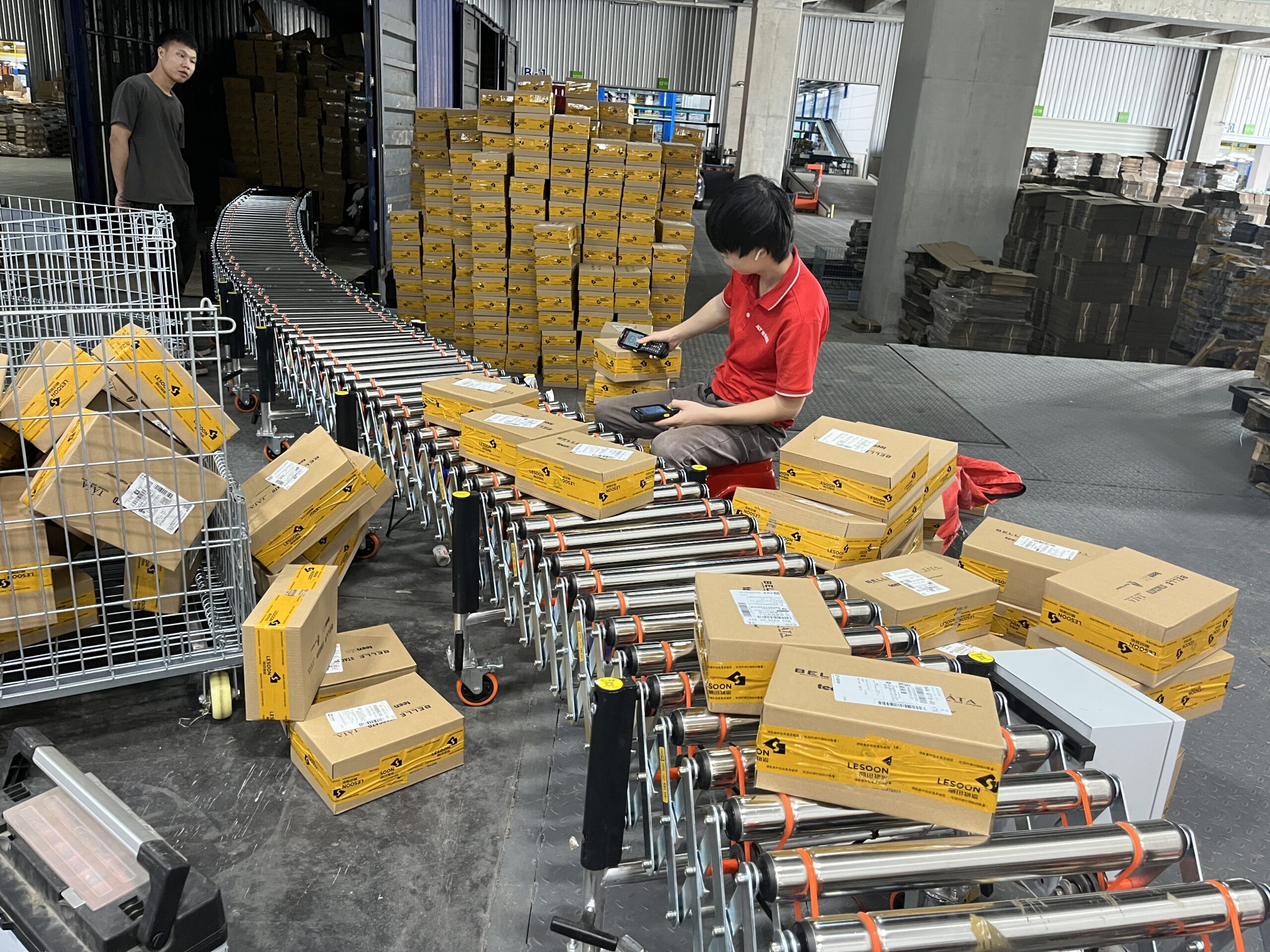 
|
| Best Use Case | High-volume dedicated loading docks | Facilities without loading docks | Existing docks needing flexible extension |
| Initial Investment | Higher | Moderate | Lower |
| Maximum Reach | 5-17 meters (depending on model) | Up to 19.9 meters (7.9m hydraulic + 12m roller) | Unlimited (with connected sections) |
| Loading Speed | Fastest (3500-5000 pieces/hour) | Fast (2500-3500 pieces/hour) | Moderate (2000-3000 pieces/hour) |
| Installation Complexity | Higher (typically fixed installation) | Moderate | Low (highly portable) |
| Height Adjustability | Limited (hydraulic lift option) | Excellent (700-2400mm) | Moderate (adjustable legs) |
| Portability | Limited (larger models) | Good (with casters) | Excellent (lightweight, collapsible) |
| Space Requirements When Not In Use | Larger | Moderate | Minimal (collapsible) |
| Maintenance Requirements | Moderate | Higher (hydraulic system) | Lower |
| Ideal Truck Types | Consistent fleet | Varied heights and types | Standard dock-height vehicles |
| Power Requirements | Higher | Moderate | Lower |
Additional factors to consider when making your selection:
- Operational frequency: How many trucks do you load/unload daily?
- Package characteristics: Size, weight, and fragility of typical items
- Facility constraints: Available space, power supply, and existing infrastructure
- Workforce considerations: Available personnel and training requirements
- Future scalability: Anticipated growth and changing operational needs
Choosing the Right Naili Conveyor to Eliminate Loading Bottlenecks
Optimizing your truck and container loading operations is about finding the perfect match between your specific challenges and the right conveyor technology. Each of the systems we’ve explored offers distinct advantages for different operational profiles.
The telescopic conveyor represents the gold standard for high-volume, dedicated loading docks where maximum throughput is the primary objective. Its ability to create a continuous, powered path deep into trailers dramatically reduces loading/unloading times and labor requirements.
For operations without traditional loading docks, the hydraulic conveyor with roller extensions creates a versatile solution that adapts to virtually any vehicle height while providing excellent reach. This combination effectively transforms any location into a functional loading zone without permanent infrastructure changes.
The extendable powered roller conveyor offers outstanding flexibility and value for operations with existing docks or those needing adaptable solutions. Its modular design and easy reconfiguration make it perfect for evolving businesses and varied loading scenarios.
Whichever system you select, implementing a specialized warehouse loading conveyor solution delivers measurable benefits across your operation:
- Reduced loading/unloading times by 40-60% compared to manual methods
- Lower labor costs through more efficient personnel allocation
- Decreased product damage from minimized handling
- Improved worker safety and reduced physical strain
- Enhanced scheduling accuracy and truck turnaround times
- Better space utilization through optimized workflows
The right conveyor system doesn’t just solve immediate loading challenges—it creates a foundation for operational excellence that supports your business as it grows and evolves.
Frequently Asked Questions
How much can I expect to reduce loading/unloading times with these conveyor systems?
Depending on your current method and the system selected, you can typically achieve 40-60% time savings compared to manual loading. High-volume operations using telescopic conveyors often see the most dramatic improvements, with some reporting completion times reduced from hours to minutes for full container loads.
What power requirements do these conveyor systems have?
Telescopic conveyors require three-phase power, typically 380V, with motor sizes ranging from 1.5kW to 3.7kW depending on model size. Hydraulic conveyors need power for both the belt motor (750W) and hydraulic pump (2.2kW). Powered roller conveyors use smaller motors, typically 120W reducers with variable frequency drives ranging from 0.75kW to 2.2kW based on system length. All systems can be configured for either 220V or 380V operation.
Can these systems handle all types of packages and products?
These systems are designed primarily for standard boxed goods and regular-shaped packages. Telescopic and hydraulic conveyors use belt surfaces ideal for most package types. Powered roller conveyors require items with stable, flat bottoms. For unusual shapes, extremely heavy items (over 100kg), or very fragile goods, specialized handling solutions might be required.
How difficult is installation, and what preparation is needed?
Telescopic conveyors typically require the most preparation, often involving fixed mounting at loading docks. Hydraulic conveyors need only a flat, stable floor surface with appropriate electrical connections. Powered roller conveyors are essentially ready to use upon delivery with minimal assembly. Naili provides detailed installation guidance for all systems, though electrical connections should be performed by qualified personnel.
What is the return on investment timeframe for these loading conveyor systems?
For operations handling over 1000 packages daily, the return on investment typically ranges from 6-18 months, depending on the system chosen and your current operational efficiency. Hydraulic and telescopic conveyor systems generally achieve faster ROI through significant labor savings and improved truck turnaround times. Many customers report complete cost recovery within one year of implementation.
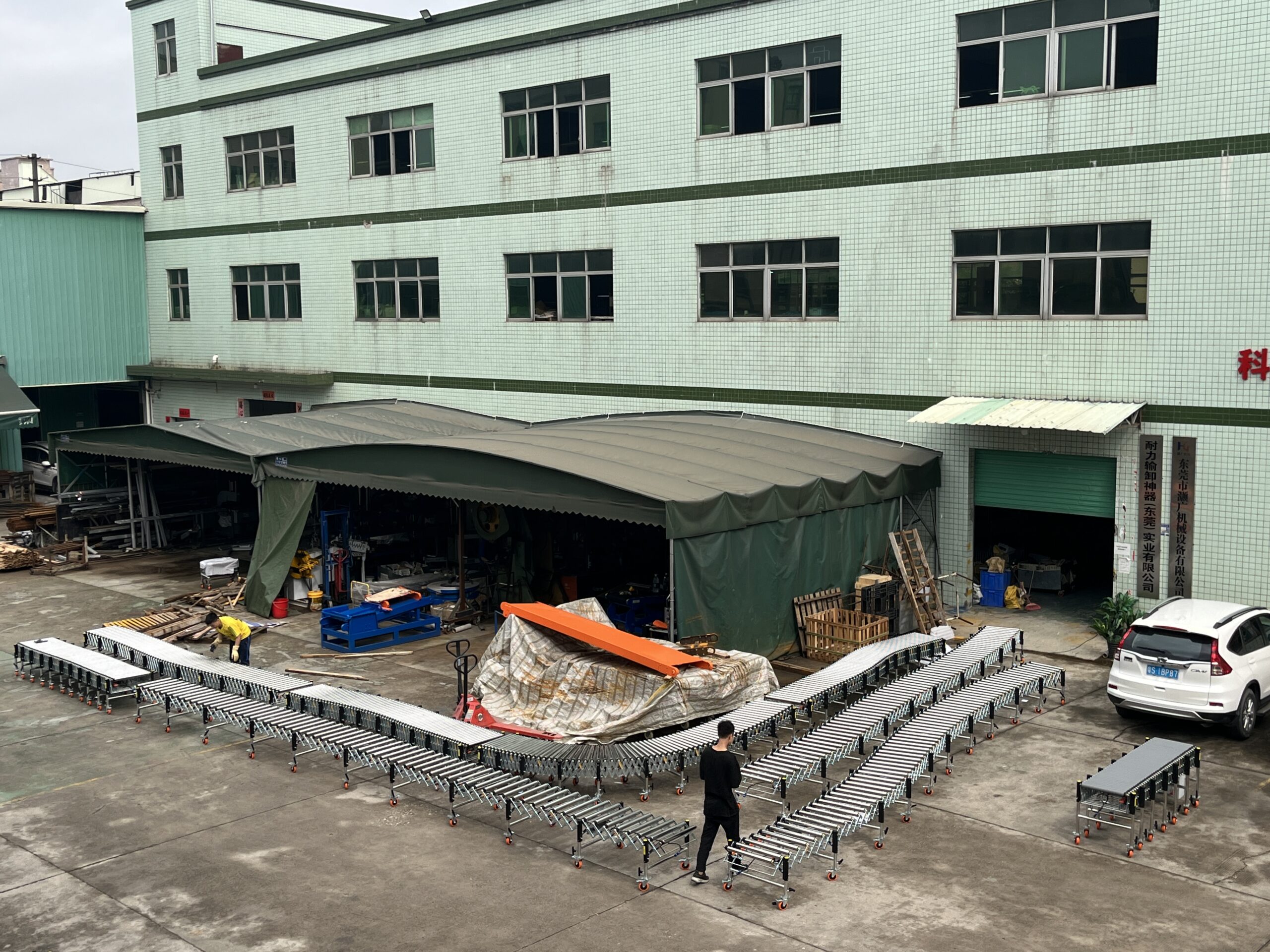

Table of Contents
Recent Posts
Optimize hardware store logistics with the right building supply conveyor systems. Our guide to tool distribution systems enhances retail warehouse automation for efficient operations.
Optimize your medical supply logistics with efficient gravity conveyor systems. Learn how to safely handle healthcare products while improving your hospital supply chain operations.
Discover how a sports equipment conveyor system can streamline your athletic gear logistics. Flexible conveyor solutions for all shapes and sizes of sporting goods.

